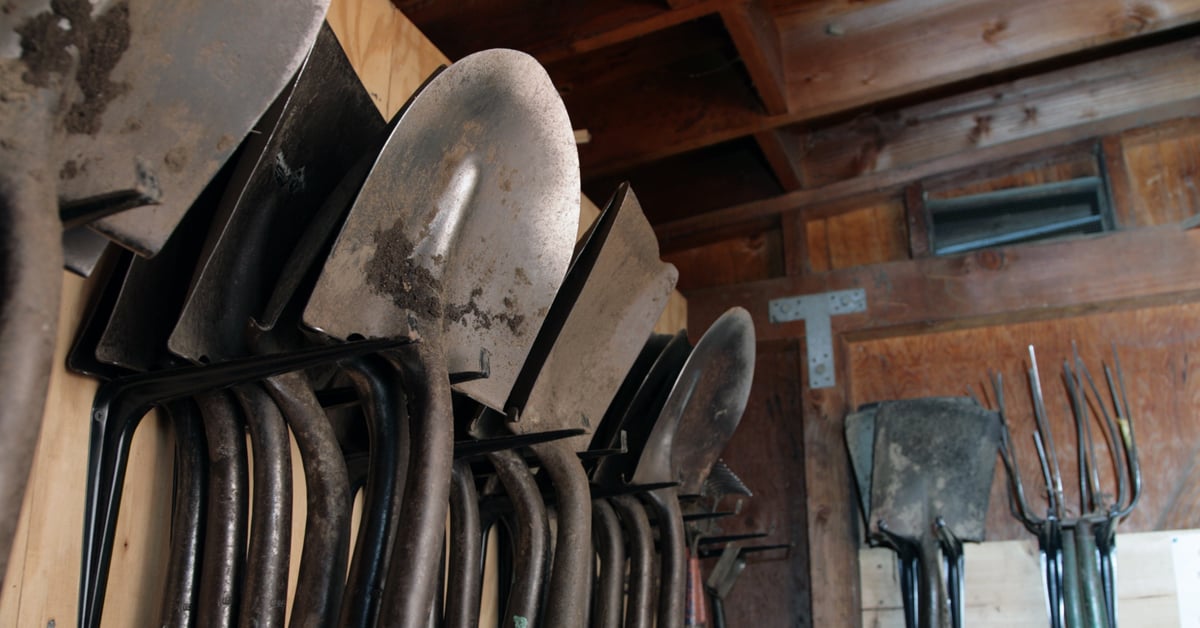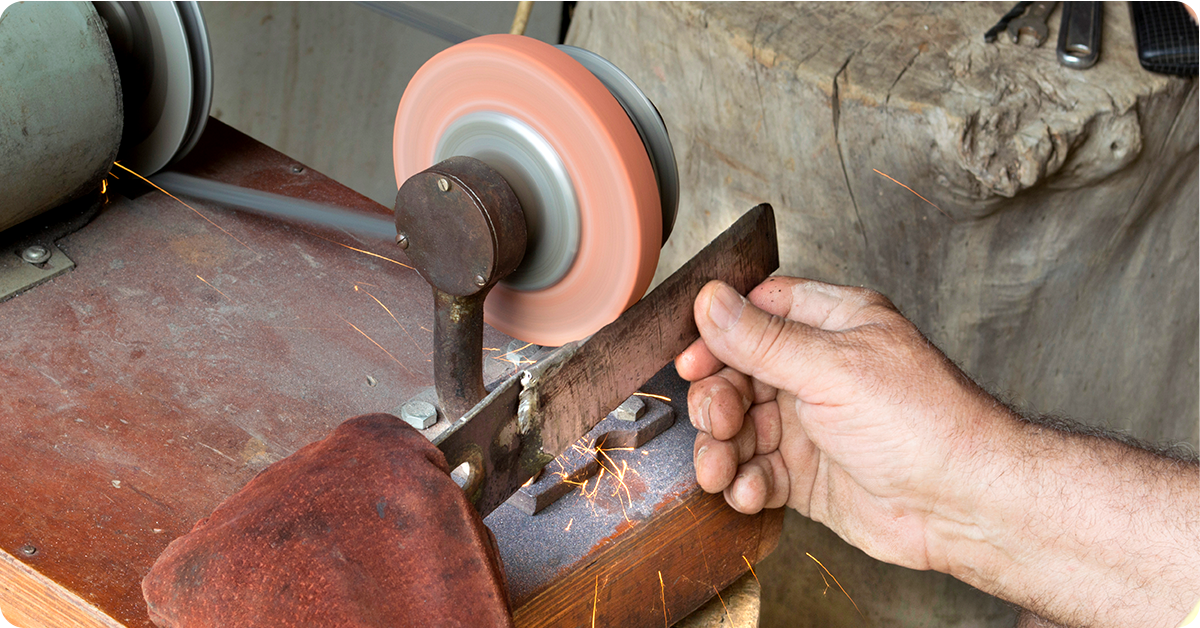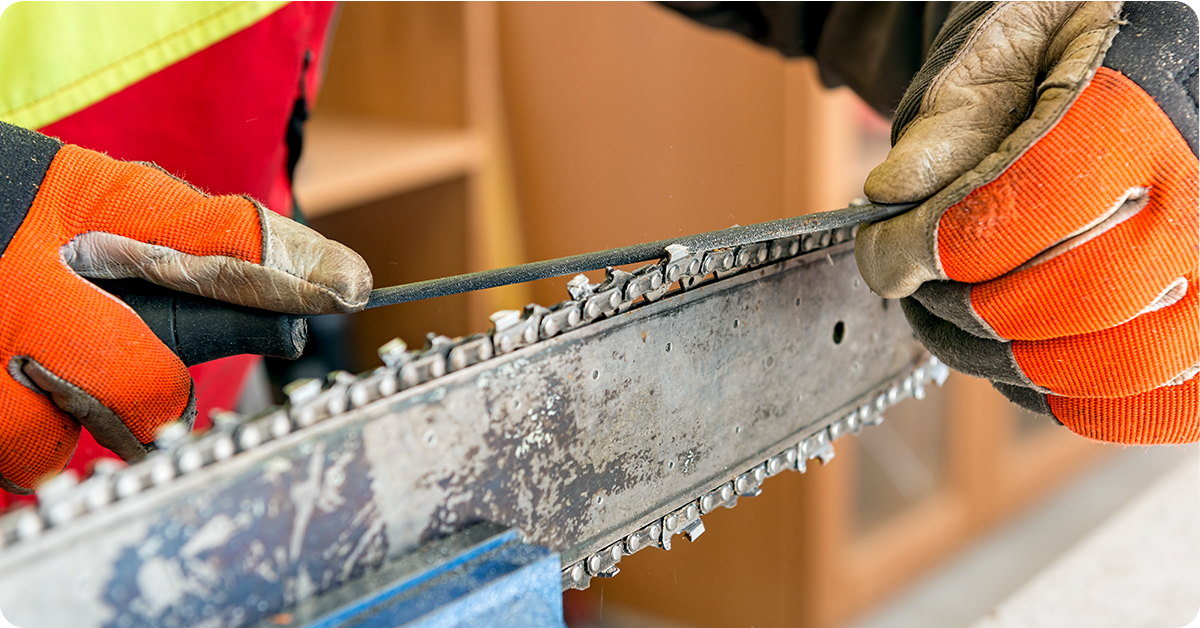
Almost everyone has experienced the struggle of trying to slice through meat or veggies with a dull knife. The extra oomph needed to get the job done often leads to tearing rather than cutting. The same goes for grass, leaves, and branches when you use a dull blade instead of a sharp one.
Giving your tools a seasonal sharpening is a smart move for anyone who loves working with their hands. It makes your tasks easier and, depending on what you're working on, promotes healthier plants in your lawn or garden.
Why should you keep your yard tools sharp, and which ones need regular sharpening? There might be a few you haven't previously considered.
Why To Sharpen Yard Tools
1. Cleaner Cuts, Healthier Plants
Blades that are not adequately sharpened tend to "rip" at the plants being trimmed rather than providing a precise, clean cut. This tearing increases the exposed surface area of the plant, heightening the risk of moisture and nutrient loss, and potentially leading to disease. It applies to all plants in your garden and landscape, including garden vegetables, trees, shrubs and your lawn.
Specifically for lawnmower blades, grass tends to entangle around a dull blade, resulting in tearing rather than cutting the turf. While the mower will get the job done, it will leave the lawn with torn and frayed turf blade ends. This can result in several lawn issues:
Lawn Discoloration
Even if a single blade of grass with torn, dry ends doesn't seem too brown the next day, those dull lawnmower blades are affecting your entire lawn. A touch of brown on each grass strand can gradually create a tan or brown tint across your whole lawn.
Increased Risk of Lawn Diseases
When grass blades are torn and ragged, it creates more opportunities for diseases and fungi to sneak in. With these little "wounds" on the grass tops, fungi like snow mold, red thread, fairy ring, and brown patch can easily make their way down to the roots of your lawn.
A Less Hardy Lawn
Grass that isn’t in prime condition is less resilient against summer heatwaves, drought and pests. Strengthen your lawn health with clean cuts to minimize water and nutrient loss.
2. Less Strain On You and Your Tools
Putting in extra effort can really take a toll on both you and your tools. Trimming bushes with a dull pair of shears might leave you with a sore back or shoulders. Plus, that same dull blade causing your discomfort can also wear down the hinges and strength of your shears.
Using a dull shovel can make digging a bit more of a workout and might even lead to some wear and tear, just like a chainsaw with a dull chain can get tired out or jam up more easily. Bear in mind, the duller the blade, the trickier it becomes to sharpen and keep in good shape later on. If you're using your tools every day or week, they'll need a little more TLC than those you only bring out once in a while.
Help keep your equipment and your body in great shape for years to come by giving your equipment a good seasonal sharpening. Your future self will definitely appreciate it!
3. Helps to Prevent Injuries
Working outdoors can sometimes lead to injuries, but the good news is they're totally preventable! They keep you from maintaining and growing the things you love while also...well, hurting quite a bit.
Just like how scar tissue builds up, injuries can accumulate over time and lead to more issues down the road. But here's a simple tip: keep your tools nice and sharp to reduce the strain on your body and help prevent those injuries. By giving your yard equipment a seasonal sharpening, or even more often if you use them a lot, you can stay safe and keep doing what you love for years to come!

Yard Tools That Need Sharpening
There are plenty of ways to tackle any task, but when it comes to keeping your blades and spades sharp, here's a simple guide to the tools you use most often and why they need regular sharpening:
Lawnmower Blades
Put less strain on your mower and your lawn. You can easily sharpen those lawnmower blades using a bench grinder, a clamp and file or even a handy blade sharpening drill attachment.
Garden Shears, Pruners and Loppers
Keeping your shears nice and sharp will make your work go much faster and save your forearms and shoulders from feeling like they're about to fall off. Using sharp tools also aids in maintaining the health of your trees and shrubs during pruning.
Trowels (hand shovel)
Maintaining a sharp trowel is important since the majority of the effort in using it relies on your upper body rather than your strong legs. Ensure your arms and back remain happy.
Shovels
Sharp shovels are an underrated way to speed up job progress. A mill bastard file paired with a rust preventer is the best way to go for shovels. One easy tip to keep your shovel sharp is to hang it up or store it blade-side-up to keep the weight of the shovel off the blade itself.

Hoes
Cut through the soil effortlessly with a sharp-edged hoe. Just sharpen them like you would a shovel or trowel!
Edging Tools
There are many kinds of edging tools available, but regardless of which one you choose, it's important to identify your specific tool and find instructions on how to sharpen it before starting. For instance, the manual half-moon edging tool can be sharpened using a file or edge grinder, though it's not often sharpened. Our preferred edger is the Kwik Edge tool.
Axes and Hatchets
A dull axe is far more likely to bounce off the material rather than slice through it, unlike a sharp axe. Methods for sharpening axe blades include using a file, whetstone, rock or river stone, Dremel tool, belt sander, or angle grinder. A file and sharpening stone are the gentlest options for your axe.
Chainsaw Chains
A dull chainsaw chain can cause significant damage to your chainsaw and increase the likelihood of the chain breaking while in use. The most common method for sharpening these blades is with a chainsaw file. The file size should match the chain pitch, which is the distance between blade crests. For the most common pitch of ⅜”, a 5.2mm round file is required. Always ensure you are using the correct file size.
Pocket Knives (or larger)
Keeping your knives nice and sharp is one of the best practices to stay safe while using them. All you need are two handy tools: a sharpening stone and lubricant. It's a good idea to use some lubricant on pocket knives to keep the blade in tip-top shape and avoid any heat damage during sharpening.
Just a friendly reminder: It's super important to use the correct files, whetstones and other tools when sharpening your blades. Using the wrong ones might harm your tools or even lead to injuries. To keep everything in tip-top shape, it's a good idea to check the instructions that come with your tool for the best maintenance tips. And don't forget, wearing mesh or cut-resistant gloves is highly recommended whenever you're sharpening!

Single-Bevel and Double-Beveled Blade Edges
Common yard tools with blades can be categorized into two types: single-bevel and double-bevel. Double-beveled blades have both sides angled the same way, just like the trusty axes and knives you might have in your garage or shed. Single-beveled blades have a bevel on just one side. You'll find these in tools like lawnmower blades, chainsaws, shears and loppers. To keep them functioning perfectly, make sure the other side stays nice and flat!
The angle of the blade's edge, or bevel, varies based on what the tool is meant for. It's a good idea to align the blade edge with the original factory design.
- A thin edge, like the one on a razor or scalpel, is super sharp and great for slicing through soft materials. However, it's a bit too delicate for most yard tools. These edges are typically 20° or less (10° per side).
- A thick edge, on the other hand, is tough enough to handle heavy-duty tasks like chopping, but it might not be the best choice for slicing through softer materials.

Keep Yourself Safe
Maintain the pace and progress of your projects. By sharpening your blades with good technique and following safety measures closely, you can stay as injury-free as possible.
Keep your digits intact with the following safety tips:
- Using a vice or clamp is recommended to prevent the tool from slipping during sharpening. If these are not available, ensure you hold the tool firmly and brace the arm holding it against a table, sharpening in a direction away from your body.
- Safety gloves made of cut-resistant or metal mesh are perfect for avoiding cuts when working with a file or sharpening stone. However, they should not be worn when using a grinder, as they might get caught in the grinding wheel.
- Wearing safety glasses or goggles is advised to protect against flying debris.
- A full-face shield and protective clothing are important when using a metal grinder because tiny flying pieces of metal and sparks are common. A respirator is recommended to avoid inhaling the flying particles.
- An important technique that bears repeating: when using a file or sharpening stone, always sharpen in a direction away from your body.
- Tie back loose hair and remove loose-fitting clothing or jewelry.
Keeping your trusty sidekick in tip-top shape, sharp, and ready for action is key to getting projects done smoothly. After a good sharpening, you'll find your tools much easier to handle, and your lawn and garden plants will be grateful for those crisp, clean cuts!
Let Us Help
At IFA, we're happy to help you with all the tools, materials, and techniques you need to grow the things you love. If you have any questions about your tools, gardening or lawn care, don't hesitate to drop by your local IFA Country Store. We're here to lend a hand with your next project!
Information for this article was provided by Bret Yardley, Branch Manager, Richfield IFA Country Store; Dan Jensen, Tools & Hardware Category Manager, IFA Country Store; and Ken Holt, Lawn & Garden Category Manager, IFA Country Store.














